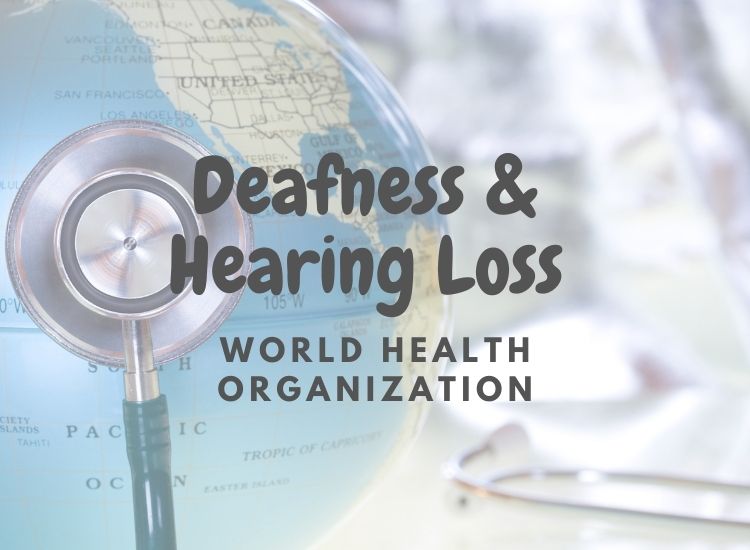
**Reference: WHO Website: https://www.who.int/health-topics/hearing-loss#tab=tab_1
Overview
A person is said to have hearing loss if they are not able to hear as well as someone with normal hearing, meaning hearing thresholds
of 20 dB or better in both ears. It can be mild, moderate, moderately severe, severe or profound, and can affect one or both ears. Major causes of hearing loss include congenital or early onset childhood hearing loss, chronic middle ear infections, noise-induced hearing loss, age-related hearing loss, and ototoxic drugs that damage the inner ear.
The impacts of hearing loss are broad and can be profound. They include a loss of the ability to communicate with others delayed language development in children, which can lead to social isolation, loneliness and frustration, particularly among older people with hearing loss. Many areas lack sufficient accommodations for hearing loss, which effect academic performance and options for employment. Children with hearing loss and deafness in developing countries rarely receive any schooling. WHO estimates that unaddressed hearing loss costs the global economy US$ 750 billion annually due to health sector costs (excluding the cost of hearing devices), costs of educational support, loss of productivity and societal costs.
Prevalence
Deafness and hearing loss are widespread and found in every region and country. An estimated 466 million people worldwide – 5% of
the population – have disabling hearing loss, and this number is expected to rise to 900 million by 2050.
Today, 34 million children have deafness or hearing loss, of which 60% of cases are due to preventable causes. On the other end of the lifespan, approximately one third of people over age 65 are affected by disabling hearing loss, with the majority of these cases in South Asia, Asia Pacific and sub-Saharan Africa.
Many of the impacts of hearing loss can be mitigated through early detection and interventions. These include specialized education programs and sign language instruction for young children and their families. Assistive technologies, including hearing aids, cochlear implants, closed captioning and other devices can help people with hearing loss at any age. People may also benefit from speech therapy, aural rehabilitation and other related services.
Low- and middle-income countries bear a disproportionate burden from hearing loss. WHO estimates that global hearing aid production covers just 3% of the need in these countries.
Prevention
WHO estimates that 50% of hearing loss can be prevented through public health measures. Some prevention strategies target
individual lifestyle choices such as exposure to loud sounds and music or wearing protective equipment such as earplugs. This can be assisted through implementing audio standards for personal audio systems and devices.
Further reductions in hearing loss can be gained through screening and early interventions in childhood, including application of assistive technologies or surgical options. Screenings can also prevent the use of damaging pharmaceuticals in high-risk cases.
Hearing loss and deafness can also occur as a complication of other diseases such as measles, meningitis, rubella and mumps. Work to prevent these diseases through vaccination and hygiene programs can have a beneficial impact on rates of hearing loss and deafness. Immunizing adolescent girls and women of reproductive age against rubella before pregnancy, and preventing cytomegalovirus infections in pregnant women, can reduce the risk of babies born with congenital hearing loss or deafness.
Reference: WHO Website: https://www.who.int/health-topics/hearing-loss#tab=tab_1